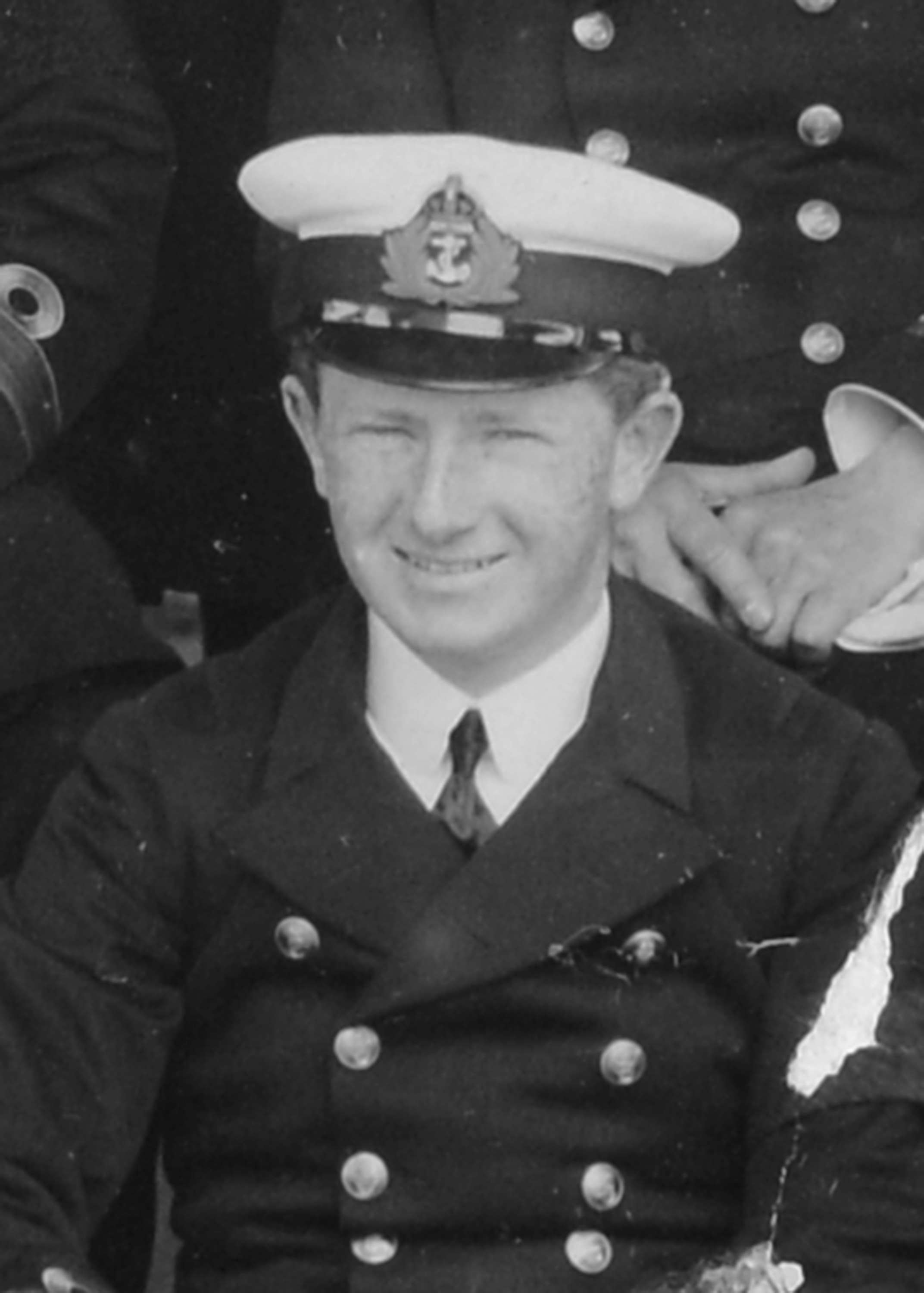

Display No. 18I
BOYLE, Alexander David
Alexander David Boyle joined the Royal Navy in 1905. He undertook officer training in HMS Britannia followed by sea training in HM Ships Auroa and Illustrious. On promotion to Midshipman he served in HMS Diadem in the Channel Fleet and later in HMS Powerful of the Australian Squadron. He later served as a Sub Lieutenant in HMS Triumph with the Home Fleet before his appointment to HM Royal Yacht Victoria and Albert where he was promoted to Lieutenant. He also served in HM Ships Blenheim and Donegal.
At the outbreak of the First World War, Boyle was serving in HMS New Zealand and saw action in the Battles of Heligoland Bight, Dogger Bank, and Jutland. During the Battle of Jutland he commanded the X turret which held two 12 inch guns. The turret received a direct hit and for his conduct in this action Boyle was Mentioned in Despatches (MiD). He was also awarded the French Croix de Guerre with palms for service in these three actions. From 1917 to 1918 he served as second in command in HMS Birkenhead in the North Sea but rejoined HMS New Zealand after the Armistice, spending time cruising round the Empire with Admiral of the Fleet, Viscount Jellicoe. He returned to New Zealand in HMS Chatham and retired from the Royal Navy in 1920 as a Commander.
In 1928 Commander Boyle was appointed the first Commanding Officer of the Canterbury Division of the RNZNVR, serving until 1934. At the outbreak of the Second World War, Boyle was called for service and was posted to the Navy Office Wellington as Staff Officer for Technical and Material Duties. From 1941 to 1943 he was Naval Officer in charge of Lyttelton. He was later promoted to Captain and appointed Naval Officer in Charge of Wellington where he remained until his retirement from the Navy in 1945. He was awarded the United States Legion of Merit in the same year.
Awarded medal(s)
Medal Description [Left to Right]:
The 1914-1915 Star
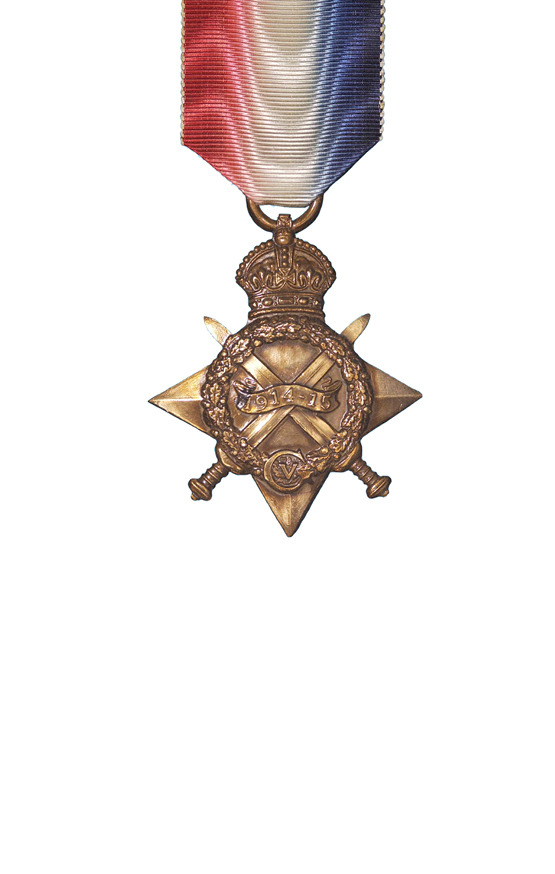
The 1914-15 Star was awarded to servicemen and servicewomen who served in the First World War between 5 August 1914 and 31 December 1915 in any “theatre of war”, provided they had not qualified for the 1914 Star. This included service at Gallipoli between 25 April 1915 and 31 December 1915, service in Egypt between 5 November 1914 and 31 December 1915, and service during the capture of German Samoa on 29 August 1914. Those eligible for the medal must have “served on the establishment of a unit in a theatre of war” during the relevant dates of operations in that area. The ribbon’s red, white and blue shaded and watered bands represent the flag of the United Kingdom.
The British War Medal
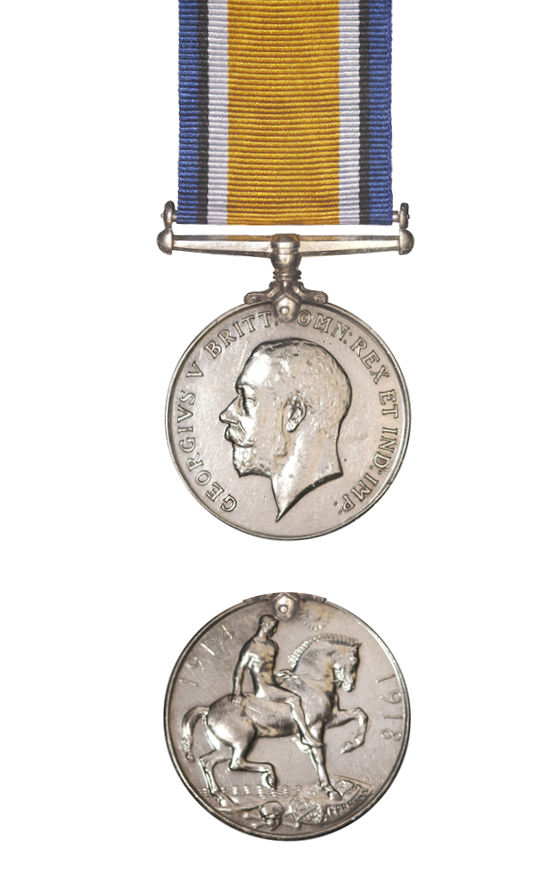
The British War Medal was instituted in 1919 to recognise the successful conclusion of the First World War (1914-1918). Its coverage was later extended to recognise service until 1920, recognising mine clearing operations at sea, and participation in operations in North and South Russia, the eastern Baltic, Siberia, the Black Sea and the Caspian Sea.
The Victory Medal
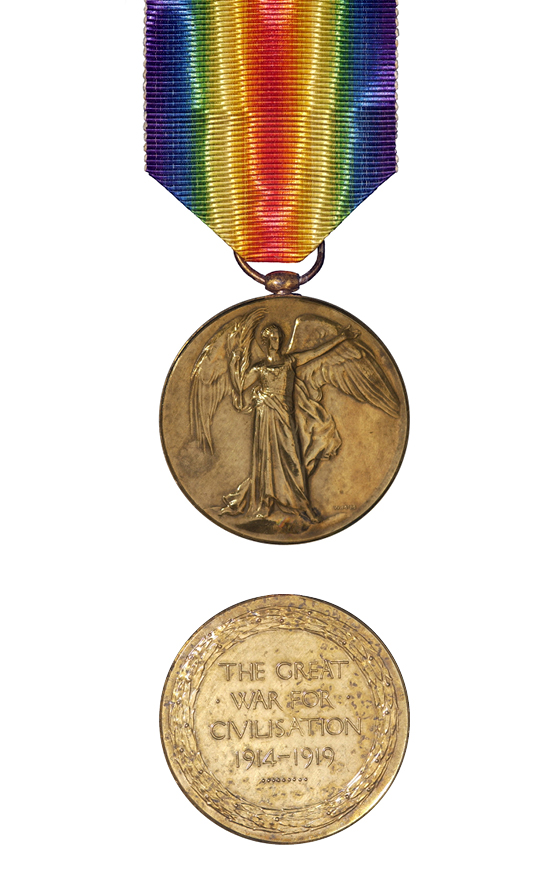
The Victory Medal was awarded in the First World War to all those who had already qualified for the 1914 Star or the 1914-15 Star, and to most persons who had already qualified for the British War Medal. The Victory Medal was awarded to all New Zealand troops serving overseas, except for those who arrived in Samoa after 30 August 1914 and those serving in Great Britain only. It has a unique double rainbow ribbon.
A bronze spray of oak leaves on the medal ribbon denotes that the recipient was Mentioned in Despatches during the period that the medal recognises. To be Mentioned in Despatches a member of the armed forces has had their name mentioned in an official report, written by a superior officer, and sent to a higher command. The report would describe the individual’s gallant or meritorious action in the face of the enemy.
The Defence Medal
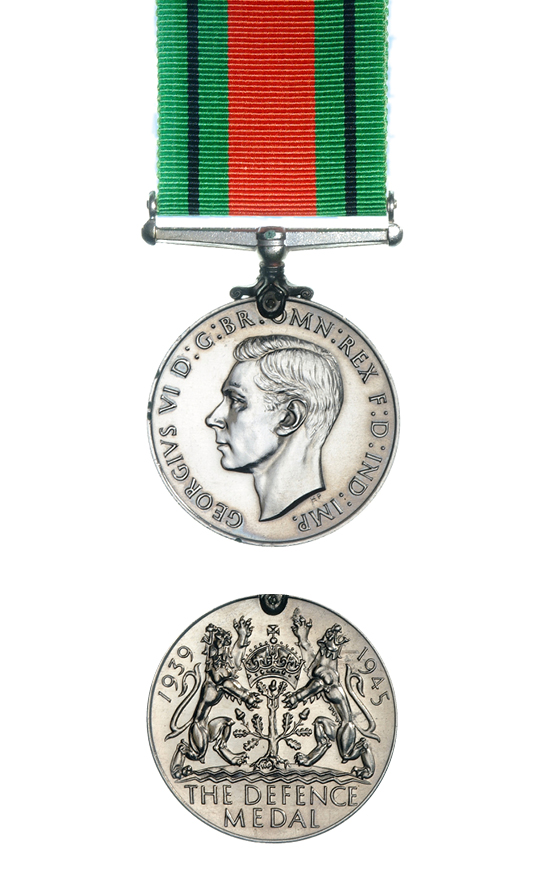
The Defence Medal was awarded to British and Commonwealth forces who served during the Second World War. It was awarded to New Zealand military personnel who served overseas in a non-operational area such as Great Britain, Palestine or Fiji. The ribbon’s flame-coloured orange centre band and green edge bands symbolise enemy attacks on Britain’s green and pleasant land. The narrow black stripes represent the black-outs against enemy air-attacks.
The War Medal 1939-1945
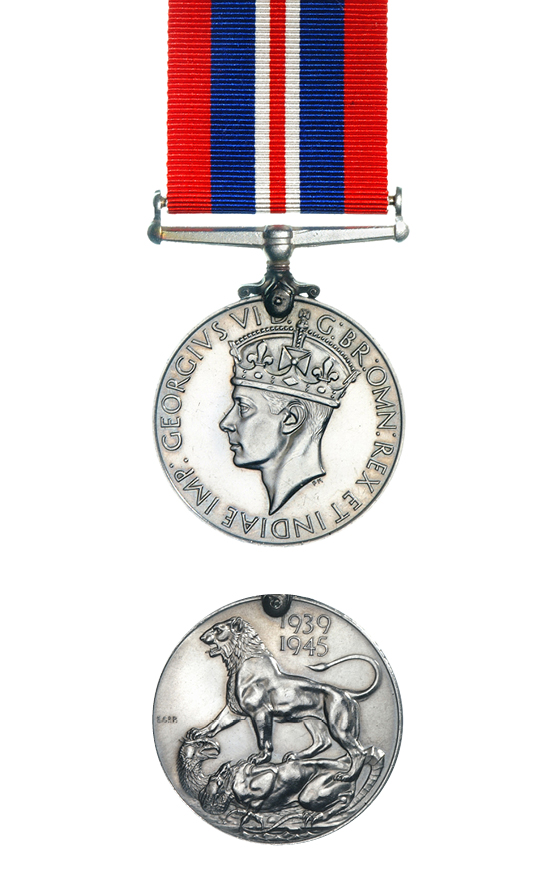
The War Medal 1939-45 was awarded across the British Commonwealth to all full-time members of the Armed Forces in the Second World War for 28 days service between 3 September 1939 and 2 September 1945, irrespective of where they were serving. The ribbon is the red, white, and blue of the (British) Union Flag. There is a narrow central red stripe with a narrow white stripe on either side. There are broad red stripes at either edge, the two intervening stripes being blue.
A bronze oak leaf on the medal ribbon denotes that the recipient was Mentioned in Despatches. To be Mentioned in Despatches a member of the armed forces had their name mentioned in an official report, written by a superior officer, and sent to a higher command. The report would describe the individual’s gallant or meritorious action in the face of the enemy.
Jubilee Medal 1935
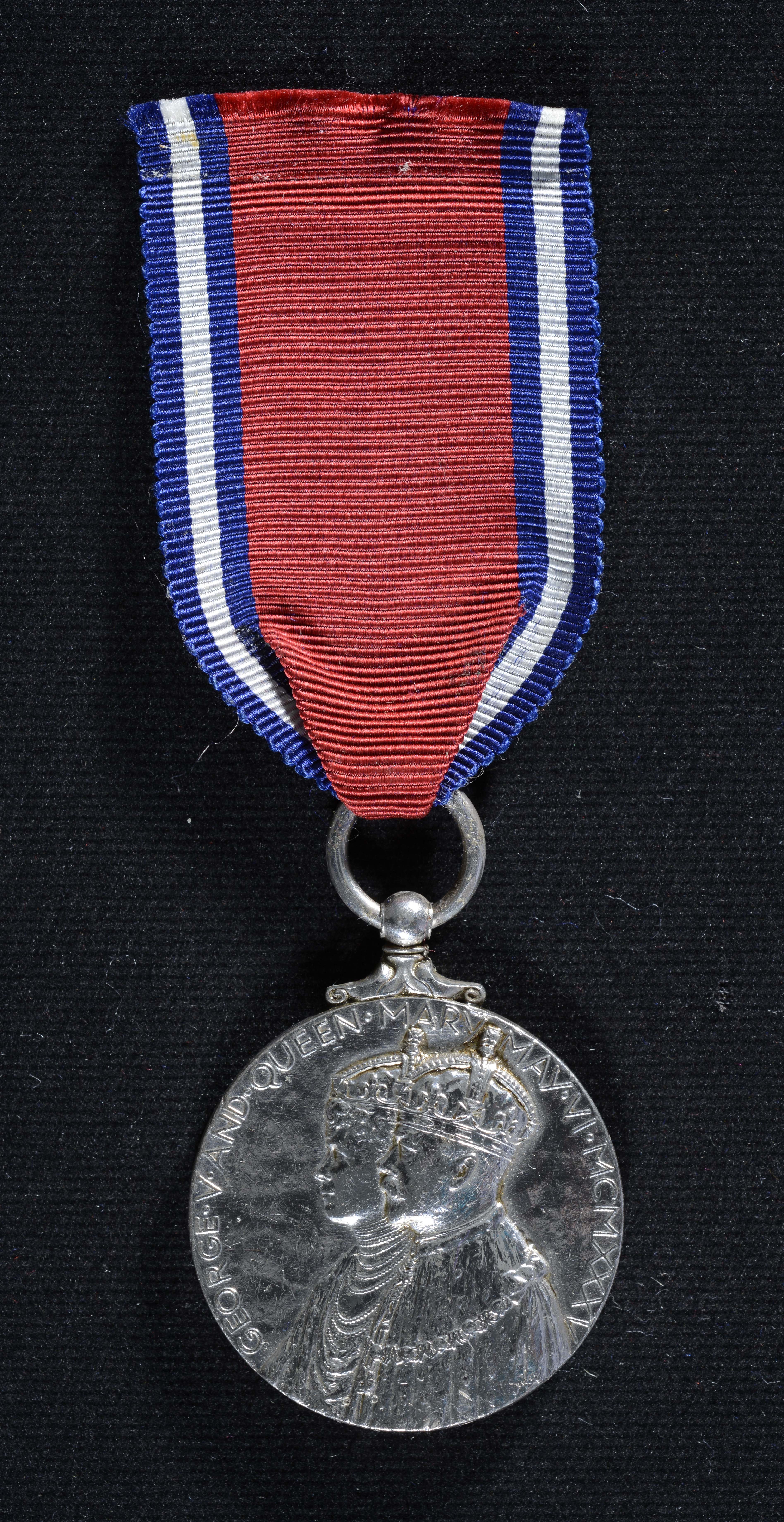
A commemorative medal instituted to celebrate the 25th anniversary of the accession of King George V.
Legion of Merit (USA) with Officer Degree
A military award of the United States Armed Forces that is awarded for exceptionally meritorious conduct in the performance of outstanding services and achievements. The decoration is issued to members of the eight uniformed services of the United States, as well as to military and political figures of foreign governments. there are four categories of the award: Chief Commander, Commander, Officer and Legionnaire. The Officer is similar to the degree of Commander and is denoted by a miniature of the actual medal on the ribbon. The ribbon is striped in white, crimson and white.
Croix de Guerre (France)
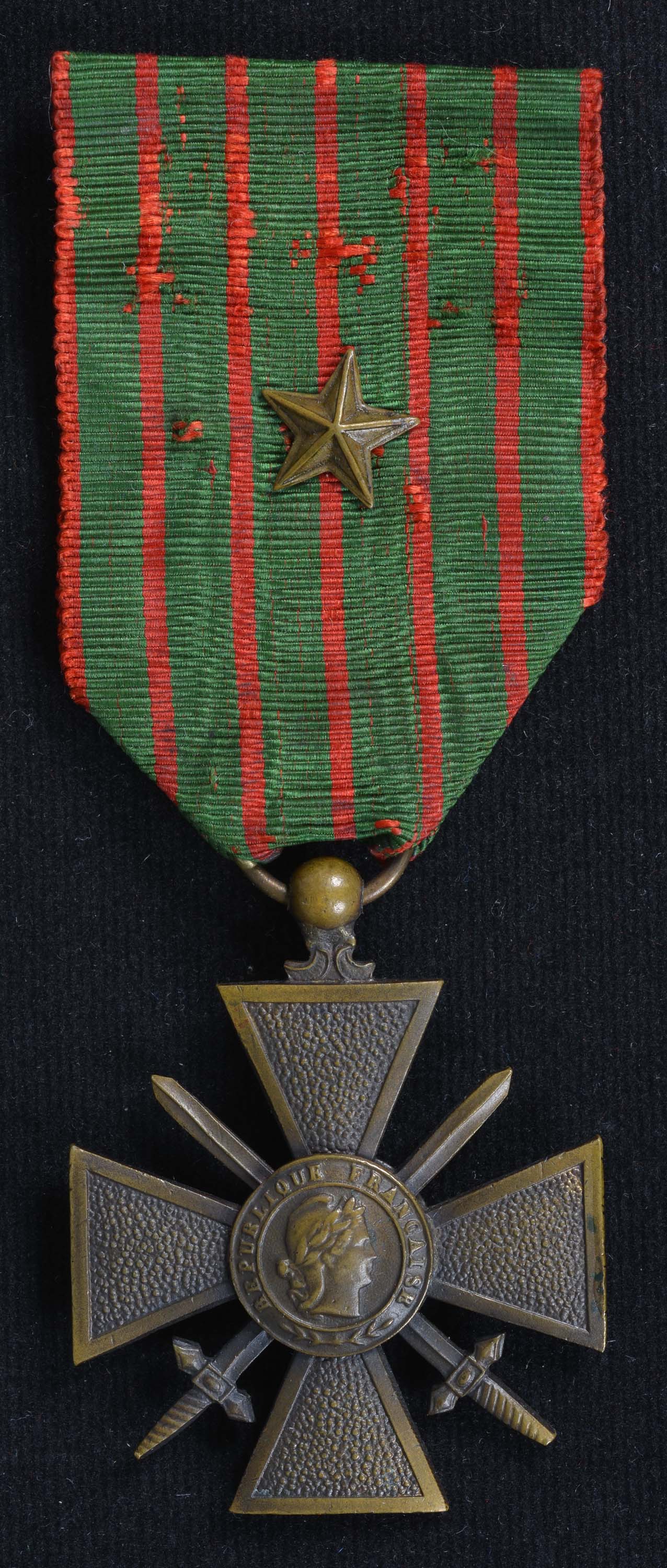
A French military decoration awarded during both the First and Second World Wars and in other conflicts. It may be awarded either as an individual award, or as a unit award to those soldiers who distinguish themselves by acts of heroism, involving combat with the enemy. The medal is awarded to those who have been ‘mentioned in despatches’, meaning a heroic deed or deeds were performed, meriting a citation from an individual’s headquarters unit.
A star or palm emblem in either bronze, silver, or gold would be attached to the ribbon indicating at what level the individual was recognised (i.e. regiment, division, corps, army). Please note this image of the medal includes a bronze star.

